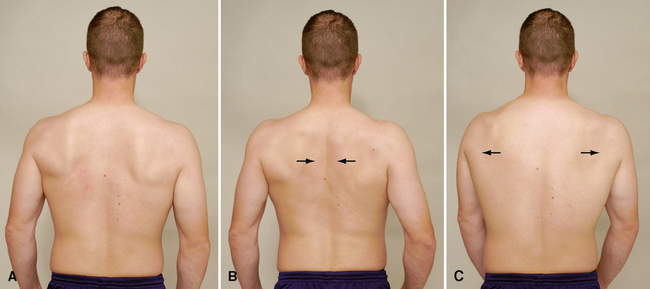Overview
A strong core is still a must for anyone looking to improve their health and physical fitness. However, many people don’t realize that there is more to having a strong core than just having a six pack.
The scapula, commonly called the shoulder blade, is a flat bone that rests on top of the rib cage and helps to keep the shoulder stable. It’s connected to the spine by muscles and ligaments. Read more about this on W-Radiology.com.. Now, let’s take a look at how the scapula and shoulder girdle work together to create balance, stability, and power.
With its complex anatomy and mobility requirements, the scapulothoracic joint is surprisingly mobile. It’s not held together by cartilage or bone, but instead relies on a combination of 17 muscles (not including the larger muscles of the lower arm or upper leg) and its ability to flex at three other joints — the acromioclavicular, sternoclavicular, and glenohumeral joints — to provide stability for the rest of the arm and shoulder.
Scapular protraction
The Protraction of Scapula is a normal physiological movement that every person does through the day due to its multi-purpose and balance function in the body. This movement ensures that the scapula bone is moved away from the spine to allow a greater degree of freedom of movement in the shoulder joint. Without this maneuver, it is impossible for the upper limbs to function properly. Scapular movement is important in athletic activities such as swimming, golf, and tennis.
The serratus anterior, pectoralis major, and pectoralis minor are part of the musculature involved in Scapular protraction. These muscles work together with the rotator cuff to stabilize the shoulder and improve overall mobility.
How to improve Scapular protraction?
When you extend your arms out to the sides as you do in push-ups or high-knee running/walking, you are using what’s called shoulder protraction. Scapular protraction means that if we were to take an X-ray, it would appear as though the ball in your shoulder has rolled out in front of the joint capsule.
While performing arm exercises, the scapula will jut out as we move our arms away from the body. This creates a problem as it keeps the shoulder joint unstable and therefore, limits how much force we can use during an exercise. There is a correct way to perform these arm movements which means you should stabilize your scaps beforehand. To do this, you need to properly set up your shoulders before doing any pushing movement such as push-ups or dips. To improve Scapular protraction, remember to move your shoulder blades back and down when reaching up. With this simple technique, you can ensure that your shoulders will always be moving in the correct position.
Scapular protraction Exercises
1. Wall Plank
Stand with your back flat against a wall or other solid surface. Extend both arms straight out in front of you, keeping your head and back against the wall. Separate your shoulder blades from one another as you push through the wall. Hold in a position with your arm straight for two seconds, and then return it to where it started. Perform this movement for two sets of ten smooth and controlled reps.
2. The Sphinx
To get into a low crawl, start by kneeling on all fours. Your knees should be slightly in front of your hips and your elbows should be underneath your shoulders. Ensure that your forearms are flat against the floor. Gravity will want to pull your shoulders down to the ground. There are a few tricks to keep the shoulders up during this shoulder stretch. First, protract the scapula while you lift your arms. This moves the shoulder blades away from each other and helps your muscles pull your shoulders up instead of down.
3. Single-Arm Dumbbell Row
To do this exercise, start by placing one hand on a bench or chair. With the other hand, pick up the dumbbell. Begin to perform a bent-over row. Be sure to avoid pulling with the ribs and waist. The shoulder blade should not retract down towards the spine. Be sure to use wrist action as well as upper-back muscles to move the weight. Keep your posture upright while rowing to keep your spine in a neutral position. The movement is best when your back stays straight—don’t let it hunch over—and your supporting arm remains vertically upright. Row for two sets of ten repetitions on both arms.
Scapular Retraction
Imagine walking around all day with your shoulders hunched in front of you. It would be exhausting, to say the least. That’s why a nice, deep scapular retraction can quickly relax your shoulders and stretch your chest while you delve into the work at hand. Scapular retraction takes place when we move our shoulder blades back toward our spine. This movement should be performed with the shoulders down and back, which will open up your chest and give you a more open posture. Retracting the scapulae is really important for a lot of exercises. It can help us get more forceful and powerful by providing extra support for the shoulder and also building up the muscles on our back!
The Scapular Retraction Muscles are responsible for scapular retraction; they draw the shoulder blade backwards and upwards. The Trapezius, Rhomboids, and LatissimusDorsi are the primary muscles of this process. They all originate at the spine and insert at the scapula.
The Scapular Retraction Test
The Scapular Retraction Test is a diagnostic tool used to test the status of the rotator cuff.It is a functional test that measures stability of the shoulder and is conducted by an examiner or physician on a joint. It is carried out by a clinician on a patient. The clinician will have the patient adopt a sitting position on an examination table.
To carry out this procedure, the physician will place his or her fingers on the patient’s clavicle. He will then stabilize the patient’s scapula with his or her palm. The physician should hold the patient’s wrist with his or her free hand to keep it steady. The patient will flex their arm at a 90-degree angle on the side the physician is examining. The physician will then push down on the patient’s extended arm. This test is considered to be positive if the patient’s pain is reduced.
Scapular Retraction Exercises
1. Standing Rows
Place resistance band around pole. Step backwards, looping the band around your elbows. Move the band down to elbow height and with a flat back, grasp the handles. Raise your elbows up towards your shoulders without bending your shoulders or back. Pull up and squeeze shoulder blades together. Perform 10 reps taking care to keep your core tight and shoulders down.
2. Dynamic T and I
While on your back, begin with your arms extending to the side in the shape of a ‘T’. Lift your arms while maintaining this shape to create an ‘I’. The exercise will be effective only if you lower your arms from the ‘I’ position and rest for roughly one second in the ‘T’ position before performing the entire maneuver again. Once you have completed the above exercise, perform 10 reps of arm elevation. The back should be erect and the head should rest on a folded towel.
3. Bilateral External Rotation
Start in an upright position with a resistance band wrapped around your arms about shoulder-width apart. Stand tall with proper posture while keeping the elbows at a 90-degree angle with the arms close to the sides. Slowly pull the band apart while you remember to keep your shoulders down and back. Ensure that you are not shortening your neck or arching your lower back. Breathe slowly and make sure your shoulders stay back and down throughout the movement. Repeat two times with a total of ten repetitions per set.
4. Hanging Scapular Retraction
A hanging scapular retraction can be a good way to start your pull-up program. Hang from the bar with your hands about shoulder-width apart, feet off the ground, and shoulders back. From the starting position, move the scapulae upward and back until you feel a nice stretch in your shoulder muscles. Feel free to hold that stretch for a couple of seconds and then return to the starting position by relaxing the scapula.
Importance of understanding these movements

If you’re looking for better shoulder flexibility and strength, the scapula is a great place to start. Each of its movements are achieved through the contraction of specific muscles and should be warm and unpinched before workouts begin. Start your warm-up by performing active, gentle movements that can pry the scapula loose from tight shoulder muscles. A professional physio can assist with this if necessary. Failure to do so can lead to scapular dysfunction and/or secondary muscle imbalance leading to potential injury. It can take several years to resolve on its own and can possibly require surgical repair.
In addition to strengthening the muscles of your upper back, there are a number of exercises for scapular protraction and retraction of your shoulders that require no equipment. This will both improve shoulder stability, posture, and also help you maintain a healthy shoulder joint.
